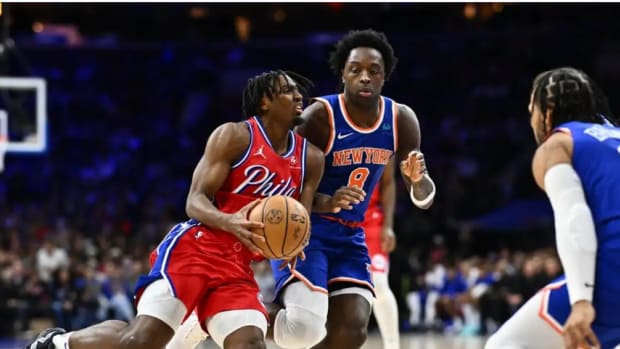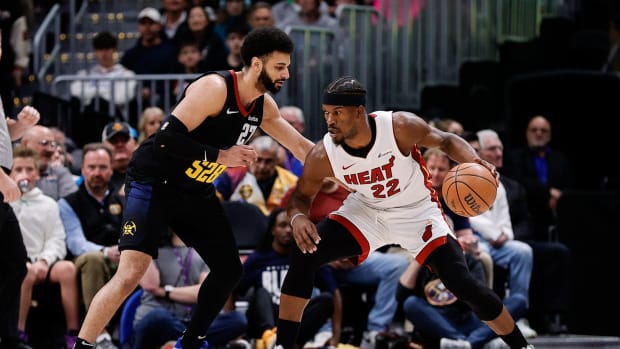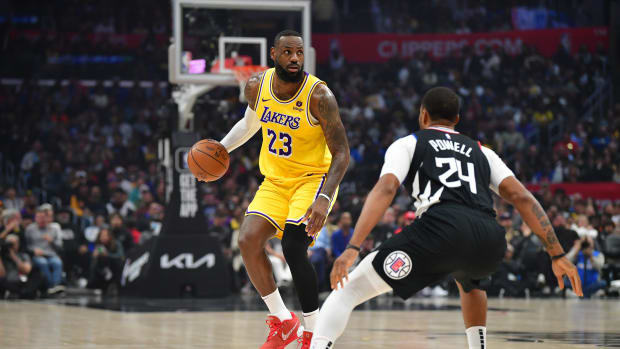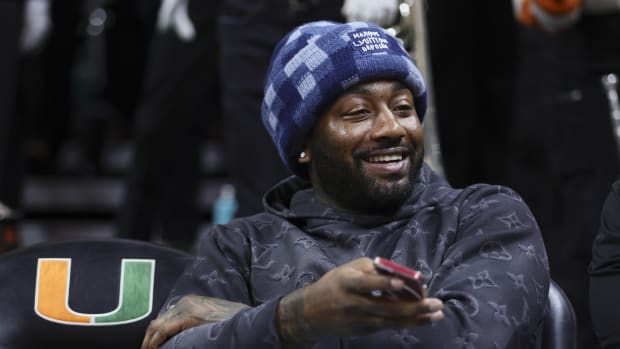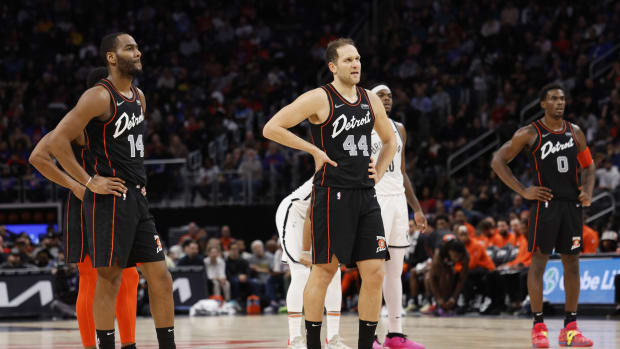What You Need to Know About the NBA’s Virtual Draft Combine
It’s been an interminably long haul for prospects, agents, teams and the hoops industry as a whole, but the predraft process is set to enter its key final stretch, beginning next week. With the NBA draft rescheduled for November 18th, the the league’s re-imagined, virtual draft combine process is presently scheduled to begin September 28th. A memo from the NBPA went out to player agents last week, as well as official information from the NBA detailing the rules of engagement moving forward, and how prospects will be asked to proceed. Those documents have been obtained by Sports Illustrated, offering insight into how the next two months will unfold. Here’s what you need to know about the combine process moving forward.
Player interviews
Combine invitations went out to the top 85 prospects out of the pool draft-eligible prospects, as determined by team votes. As we’ve reported previously, in lieu of the typical league-wide gathering in Chicago, this new combine window was designed to offer scheduling flexibility for draft-eligible prospects, facilitate added contact between players and teams, and most importantly, safely conduct medical examinations and physical testing. The process is scheduled to begin next week with a round of NBA-conducted video interviews, with each player answering the same set of 10 questions, with that footage then becoming available to all 30 teams. A second round of direct, 30-minute interview sessions between players and teams begins October 1st accounting for specific team requests, with a maximum of 20 players per team and 13 teams per player.
It’s worth noting that the interview scheduling process isn’t all that different from how the league matches players and teams at the usual combine, other than the fact it’s taking place over video chat. When interviews are assigned, there’s thought given to players’ projected draft range and where teams are drafting — so if you hear that a player interviewed with a team, it’s not always a clear-cut sign of interest. That said, given the unusual nature of this year’s draft, it would make sense to assume there will be a bit more thought given to teams’ preferences. Teams were able to schedule interviews with players on their own in the spring, but many of the draft’s top prospects opted to limit their availability to specific teams, or not do interviews at all. So the virtual combine process theoretically helps level the playing field in that respect.
Testing and Medical
The limited in-person piece of the combine will take place over the course of October, with participating prospects asked to travel by car to their nearest geographical NBA market for in-person medical testing, measurements, strength and agility testing, and shooting drills. With prospects already scattered around the country training for the draft, this helps limit the risk of frequent travel during a pandemic, and enables prospects to take part in the all standard parts of the combine, except for five-on-five. Players are also invited to participate in standardized shooting drills per usual, although this is a piece of the combine top prospects tend to opt out of under normal circumstances.
Teams hosting players at their facilities will not be allowed to watch any part of the process, to keep anyone from obtaining an in-person informational advantage, but video will be uploaded to the league’s online combine database for teams to review internally. Individual player participation in the different pieces of the combine remains strongly encouraged, but is still technically voluntary. And while it’s likely to the benefit of most prospects to do everything, the smart money is always on projected lottery picks with more solid draft footing opting out of a majority of the combine segments in order to protect their stock. Because players are now allowed to provide medical information directly to teams, it won’t be shocking to see top prospects opt out of the combine entirely.
Workouts
The on-court piece is where things get a little bit fuzzy, and the actual requirements are loose, abstract, and also voluntary. According to a memo sent to agents by the NBPA, teams are presently permitted to watch video of draft-eligible players working out, on the condition that these are solo workouts and only one coach and one player are allowed on the court. It’s important to note that that film can either be live-streamed or pre-recorded. This is an obvious opportunity for prospects and their agents to carefully curate what they’re sending to teams, or to at least let players showcase their skills in a more comfortable environment. Within the framework of the combine, players are allowed (but not required) to record a 45-minute “Pro Day” video as part of their use of team facilities, following those same stipulations.
Given that there’s some built-in risk if a player works out or shoots poorly in the combine environment, the player-friendly option here is to self-produce workout film instead, and then distribute it to teams strategically. This allows agents to control who sees what, and in some cases try to steer players to preferred destinations where there’s mutual interest. I would expect prospects to use this opportunity to creatively market themselves to teams.
In-person contact
As of today, in-person interviews, workouts and medicals between individual players and teams are still prohibited. And while the combine is designed to address these areas, at least on a cursory level, teams still strongly prefer to handle these matters in-house, using their own doctors to conduct medicals, putting players through their own drills, and getting a better sense of personality types on a face-to-face basis. According to the NBPA’s memo to agents, the NBA “is continuing to evaluate options for teams to meet with, observe, and examine draft-eligible prospects” moving forward. There are less than two months for this to be sorted out, of course, but the ability to host players in-market would be a welcome protocol adjustment for front offices around the league.






























